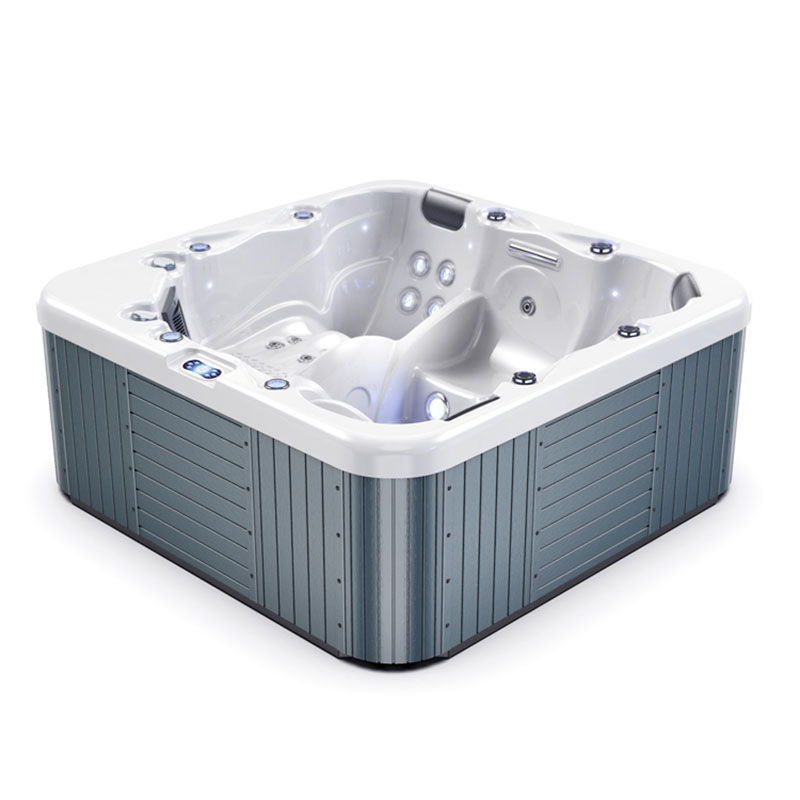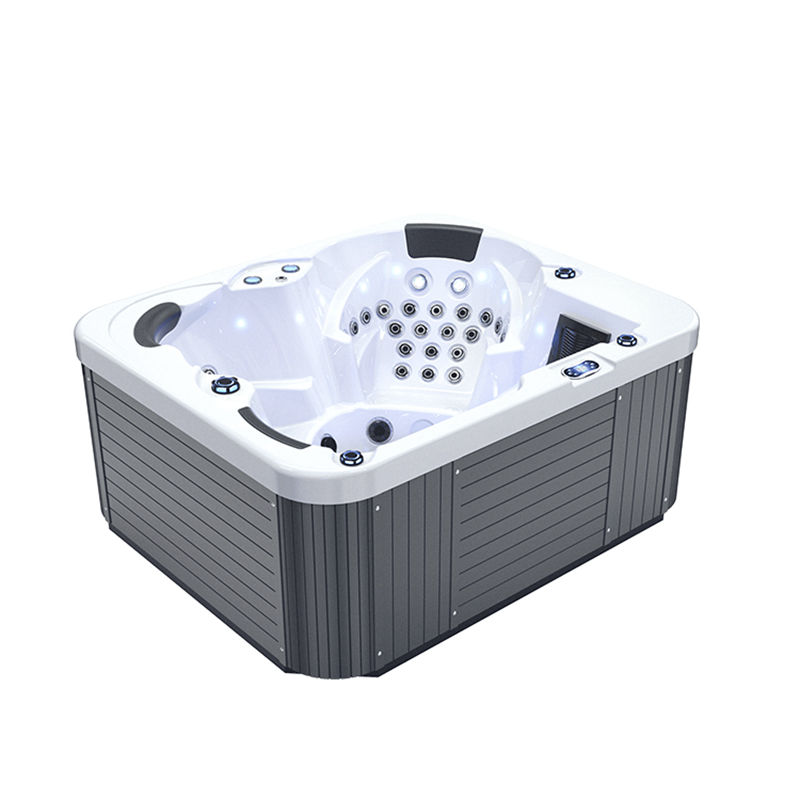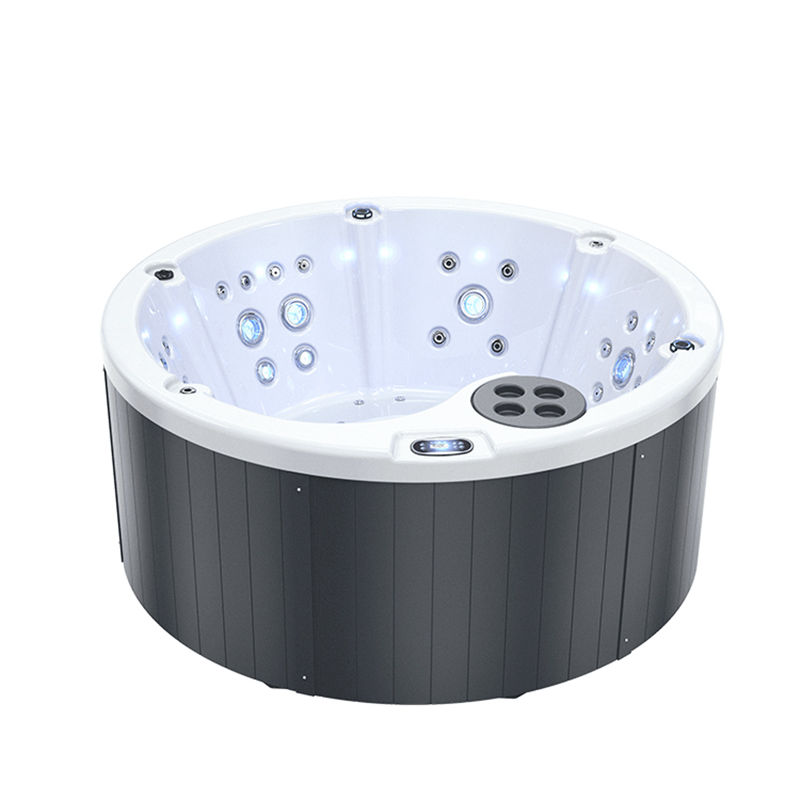As swim spa jacuzzis have become a popular choice for home fitness and relaxation, many potential buyers and users are beginning to pay attention to their operating costs, especially heating costs. Because maintaining the right water temperature in the spa pool not only affects the comfort of use, but also has a direct impact on the overall electricity bill.
For those who want to have a swim spa jacuzzi facility at home, it is important to understand and calculate the cost of heating a swim spa jacuzzi.
So, is it expensive to heat a swim spa jacuzzi? What is the monthly electricity bill? This article will take a closer look at the cost of heating a swim spa jacuzzi to help you better understand the potential costs of this investment.
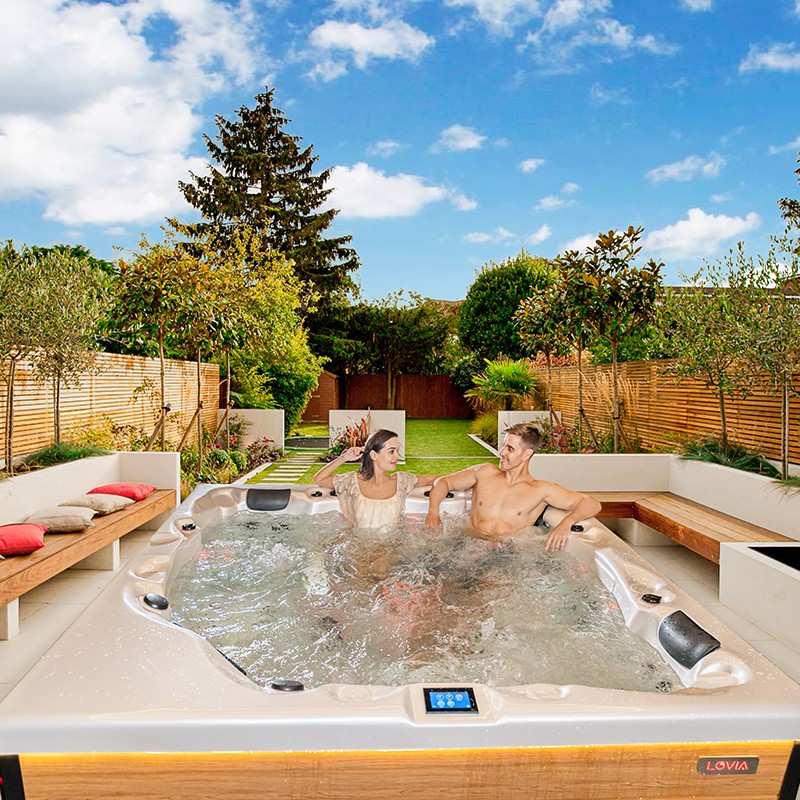
How does swim spa jacuzzi heating work?
A swim spa jacuzzi is a device that combines hydrotherapy massage and swimming functions, allowing users to enjoy water current confrontation swimming and full-body underwater massage in a relatively small space. This device usually requires continuous heating to ensure that the water temperature remains within the appropriate range, usually between 80°F (27°C) and 104°F (40°C). The heating system uses electrical energy to drive the heating elements to maintain a constant water temperature.
Factors that affect the cost of heating a swim spa jacuzzi:
1. Equipment size and water capacity
2. Heater power
3. Frequency of use and heating time
4. Ambient temperature
5. Effectiveness of insulation measures
6. Unit price of electricity
Each factor will affect the overall power consumption of the swim spa jacuzzi, which in turn affects the monthly electricity bill.
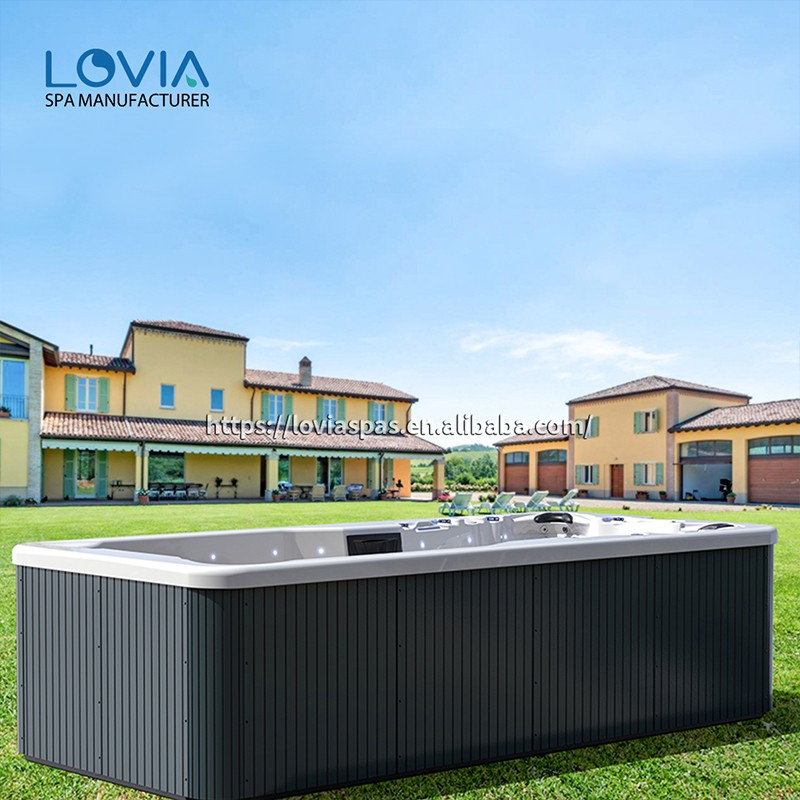
1. Equipment size and water capacity
The water capacity of a swim spa jacuzzi is one of the most direct factors affecting the heating cost. Compared with a standard whirlpool or small spa pool, the water capacity of a swim spa jacuzzi is generally larger. Some large swim spa jacuzzi equipment can hold thousands of gallons of water, while a small equipment may only need hundreds of gallons. The larger the water capacity, the more energy is required to heat the water.
For example, a typical home swim spa jacuzzi pool may require 1,000 to 2,500 gallons of water. Assuming a standard electric heater is used in your spa, it takes a certain amount of energy to heat each gallon of water. Therefore, if your swim spa jacuzzi has a larger capacity, the time and energy required to heat the water will increase accordingly.
2. Heater Power
The power of the heater determines the amount of heat it can provide per hour. Common swim spa jacuzzi heaters range from 3 kilowatts (kW) to 11 kW. The higher the power, the faster the heating speed, but it also means higher energy consumption. Assuming your heater is 5 kW, it means that it will consume 5 kilowatt-hours (kWh) of electricity per hour of operation.
Although using a high-powered heater can reach the set water temperature faster, it also consumes more energy when running continuously. Especially in cold weather, if you need to maintain a high water temperature, running the heater for a long time will significantly increase your electricity bill.
3. Frequency of use and heating time
Frequency of use and heating time are also key factors that affect heating costs. If you use your swim spa jacuzzi equipment every day and need to heat the pool every day, obviously your electricity bill will be much higher than someone who only uses it once a week. In addition, the length of use also directly determines the running time of the heater.
Some users may set the water temperature at a high level and let the heater run 24/7 so that they can enjoy a comfortable water temperature at any time. However, although this practice is convenient, the electricity bill will also increase significantly. If users can lower the water temperature when the spa is not in use, or use a smart heating controller for timed heating, they can effectively reduce unnecessary electricity consumption.
4. Ambient temperature
Ambient temperature has a significant impact on the heating cost of a swim spa jacuzzi. In cold areas, the energy required to heat a spa is greater because the cold air outside will continuously lower the water temperature. Even with better insulation measures, heaters in cold weather still require more electricity to maintain water temperature.
For example, in the cold winter, the outside temperature may be close to 0°F (-18°C), which means that the spa needs to consume a lot of energy to maintain the set temperature. In contrast, in warm climates, the external environment has less impact on water temperature, and users may only need a small amount of heater running time to maintain water temperature.
5. Effectiveness of insulation measures
Effective insulation measures can significantly reduce the heating costs of the swim spa jacuzzi. Water heat can easily be lost through evaporation and conduction from the surface, especially in cold or windy environments. Therefore, using high-quality insulation covers, insulating wall materials, and accessories such as insulation pads can significantly reduce heat loss and reduce the workload of the heater.
Insulation covers are the most common and effective insulation measures. They prevent heat from evaporating through the water surface and block cold air from directly contacting the water surface. Good insulation measures are indispensable for those who want to reduce their electricity bills.
6. Unit price of electricity
The last decisive factor is the price of electricity. The price of electricity varies from region to region, and the difference in electricity costs directly affects monthly expenses. Generally, the unit price of electricity is calculated based on kilowatt-hours (kWh). Assuming the unit price of electricity in a certain area is $0.12/kWh, if the heater consumes 5 kWh of electricity, the cost of running it for 1 hour is 5 x 0.12 = $0.60.
If your swim spa jacuzzi pool needs to be heated for 4 hours a day and is used continuously every day, the daily electricity cost is $0.60 x 4 hours = $2.4, and the monthly cost is about $2.4 x 30 days = $72. This is just the cost of running the heater. The actual monthly electricity cost also takes into account the power consumption of other equipment such as circulation pumps, filters, etc.
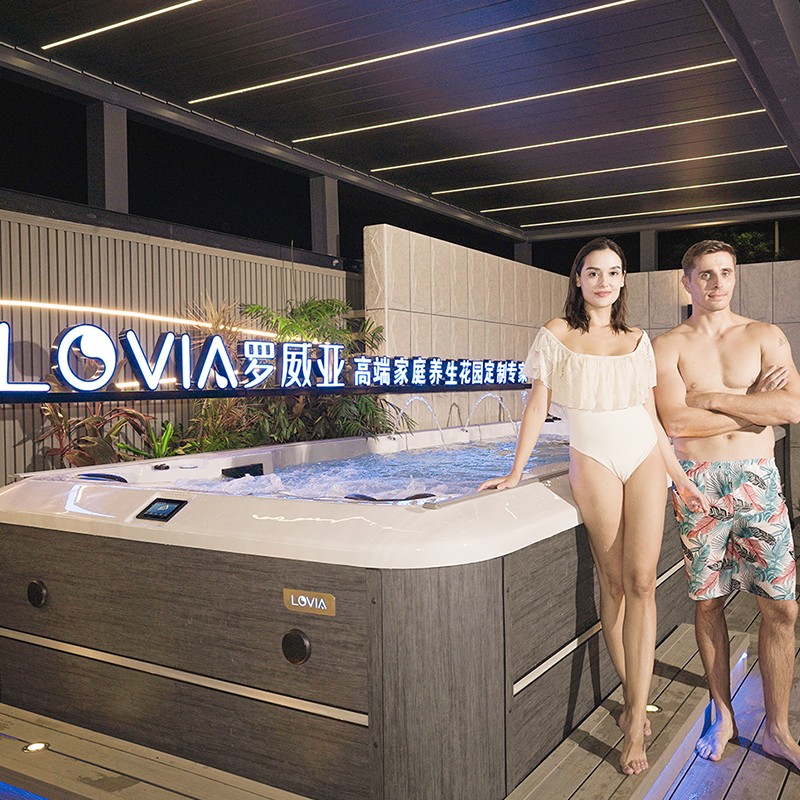
How much is the monthly electricity cost for heating a swim spa jacuzzi?
To accurately calculate the monthly electricity cost of a swim spa jacuzzi, we need to combine the above factors, specifically:
1. The size and water capacity of the spa
2. The power and usage time of the heater
3. Ambient temperature and insulation measures
4. Local electricity unit price
Assume that we have a standard home swim spa jacuzzi pool with a water capacity of 1500 gallons and a 5 kW heater. The user lives in a mild climate area with an average outside temperature of 50°F (10°C) in winter. The unit price of electricity is $0.15/kWh, and the user plans to use the spa 5 days a week and heat it for 4 hours a day. Here are the specific cost calculation steps:
·Energy required for water temperature regulation: Assume that the spa pool needs to heat 30°F to raise the temperature from 70°F (21°C) to 100°F (38°C), and the water capacity is 1500 gallons. It takes about 8.34 BTU (British Thermal Units) to raise the temperature of each gallon of water, and 1 kWh equals 3412 BTU. Therefore, the total energy required to heat 1500 gallons of water is:
1500 gallons x 8.34 BTU per gallon x 30°F = 375,300 BTU,
375,300 BTU ÷ 3412 BTU per kWh ≈ 110 kWh.
·Daily maintenance of temperature: After heating the spa to the ideal temperature, the heater will work less during daily use because it only needs to maintain the water temperature. In a mild climate, assume that 20 kWh of electricity is consumed per day to maintain the water temperature.
· Monthly electricity cost calculation: If the swim spa jacuzzi heater runs 4 hours per day and consumes 5 kWh of electricity per hour, the daily electricity consumption is 20 kWh. The monthly electricity cost is:
20 kWh per day x 30 days x $0.15 per kWh = $90/month.
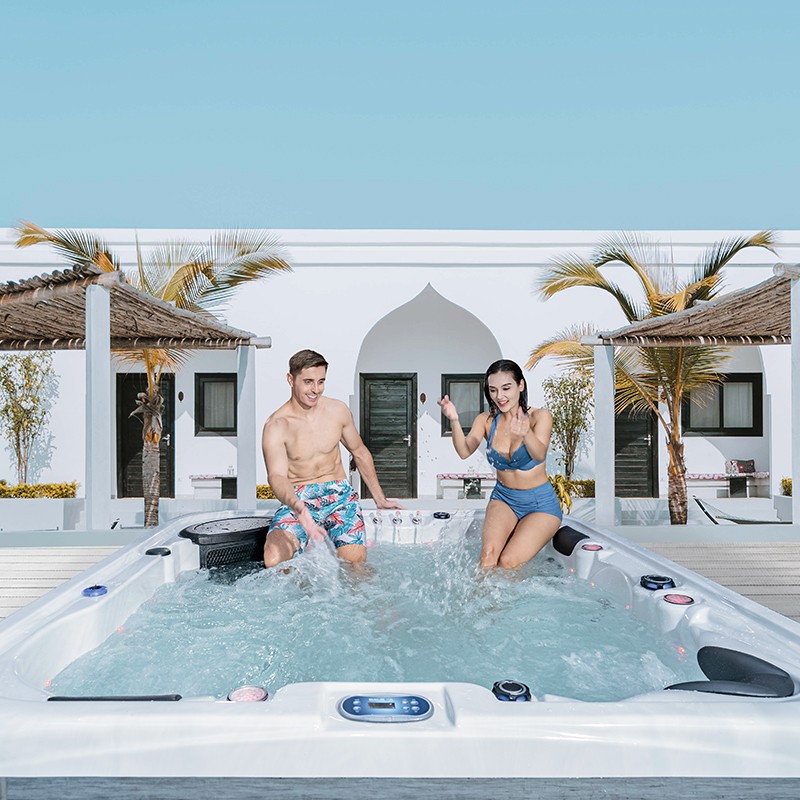
How to reduce the heating cost of a swim spa jacuzzi?
Although the heating cost of a swim spa jacuzzi will vary depending on the size of the equipment, frequency of use and environmental conditions, the following strategies can help users effectively reduce monthly electricity costs:
· Use an insulating cover: When the swim spa jacuzzi is not in use, using an efficient insulating cover can reduce heat loss, reduce the operating time and energy consumption of the heater.
· Timed heating: Use a smart heating controller or timer to ensure that the spa is heated only when needed to avoid long periods of ineffective heating.
·Adjust water temperature: Setting the water temperature in a lower range, especially when the spa is not used frequently, can significantly reduce electricity consumption.
·Maintain equipment regularly: Keeping the heater and filtration system clean and in good working condition can improve the energy efficiency of the equipment and reduce additional electricity consumption.
What makes your spa jacuzzi tubs stand out in international markets?
Lovia Spa by Guangzhou HuanTong Industrial has earned a stellar reputation since entering global markets in 2004. As a well-established Manufacturer and Supplier, we combine over 30 years of expertise with international quality assurance through certifications like CE, ETL, ROHS, and ISO9001.
Our spa jacuzzi tubs are not only high quality, but also competitively priced for Wholesale and Bulk Buying. Our experienced design team supports customized solutions to match different climates and client preferences.


